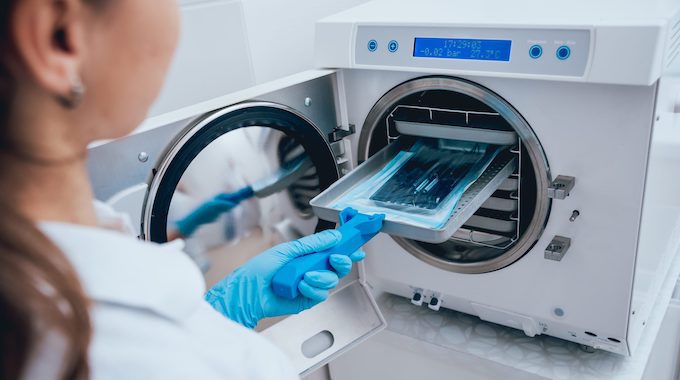- Solutions
ENTERPRISE SOLUTIONS
Infuse new product development with real-time intelligenceEnable the continuous optimization of direct materials sourcingOptimize quote responses to increase margins.DIGITAL CUSTOMER ENGAGEMENT
Drive your procurement strategy with predictive commodity forecasts.Gain visibility into design and sourcing activity on a global scale.Reach a worldwide network of electronics industry professionals.SOLUTIONS FOR
Smarter decisions start with a better BOMRethink your approach to strategic sourcingExecute powerful strategies faster than ever - Industries

Compare your last six months of component costs to market and contracted pricing.

- Platform
- Why Supplyframe
- Resources
While every facet of manufacturing has felt the effects of COVID-19 in some form, the medtech and healthcare industries were put under the greatest pressure we’ve seen in recent memory. Shortages across all manner of products and devices persisted for months as supply chains struggled to keep up with surges in demand.
Prior to a global pandemic, the medtech supply chain was struggling with issues in cybersecurity, counterfeits, and recalls on defective designs. Given the events of 2020 thus far, we’ve reached a tipping point. It’s time for a smarter approach to how we handle these critical supply chains.
Diagnosing Critical Issues in Medical Device Supply Chains
Since the beginning of 2020, supply chains have been impacted in numerous ways by the ongoing pandemic. Whether it’s delays in manufacturing, shortages in supply, logistics problems due to travel restrictions, or overwhelmed hospitals around the world, every aspect of healthcare has been impacted in a profound way.
All of this brought to light major issues in how we’ve built and manage our global medical device supply chains. Our current trajectory was never sustainable, it wasn’t resilient, and when faced with a worst case scenario, we saw just how unprepared we were for this kind of event, despite similar outbreaks and calamities in the past (albeit on a smaller scale).
Looking at medtech supply chains now and into the future, we need to address the major issues:
- Critical medical components and equipment should be stockpiled, both at a federal and a state level, to prepare for these kinds of surges in demand.
- Bottlenecks must be identified. Are we looking at shortages in components or raw materials preventing accelerated production?
- What underlying issues in the supply chain, prior to COVID-19, are preventing the industry as a whole from moving forward?
In terms of these questions, perhaps the last one is the most pertinent of them all. Medical device supply chains will always face challenges and hurdles, but if we can address issues at the foundation of our processes, we can implement solutions that have far-reaching effects.
Industry Professionals Weigh-in on Current and Ongoing Issues
As part of a series on COVID-19’s impact on the medtech industry, MedTech Dive asked several supply chain management professionals what takeaways they believed could inform the industry going forward.
Among the responses, two interesting perspectives stood out. The first pointed out a distinct gap in the current industry, saying:
“One of the fundamental problems we have with the healthcare industry as a whole is we don’t have visibility.”
Stephen Meyer, Research Director in Gartner’s Supply Chain Group
Visibility is indeed an issue in modern supply chains. In the electronics industry, a lack of insight into inventory, supply, and demand has led to shortages in numerous part and component categories.
Similarly, in the medtech sector, a shortage can become a life or death issue, which is why it makes more sense to stockpile or closely monitor supply levels.
Another response took a different approach and pointed out another major opportunity in medical device supply chains:
“We have to empower our leaders ‘on the ground’ to make quick decisions with the information available to ensure that patients continue to receive the products they need.”
Jim Bourne, VP of Global Planning, Sourcing, and Logistics at Edwards Lifesciences
Quick decisions are a crucial part of an agile and adaptive supply chain. Of course, when you don’t have a risk mitigation strategy or a plan in place for situations like this one, you’re left being reactive instead of proactive in your decision making.
This is part of a larger discussion around the lack of collaboration across silos in both supply chains and in other aspects of manufacturing like new product introduction (NPI).
Taken as a whole, it becomes clear how this situation has revealed critical flaws in medical device supply chains. Only one question remains: how do we move forward?
A New Approach For Medtech Supply Chains
Supplyframe’s solutions offer a tangible means of addressing these issues head-on. Our Design-to-Source Intelligence (DSI) platform offers a deeper look into billions of continuous demand, intent, supply, and risk signals within your supply chain.
It’s not just visibility, it’s data that empowers decision-makers to move quickly, seize opportunities, and handle critical issues in the moment. This type of visibility also extends across the organization, allowing teams to collaborate and work more efficiently throughout product lifecycles.
Suppliers, who feel the pressure of critical supply chain production, can also utilize Suplyframe’s DSI solutions to engage, identify, and convert sourcing professionals who are making decisions around commodity spend and NPI awards.
While the medtech industry continues to combat COVID-19 and numerous other challenges as they emerge, Supplyframe is proud to offer solutions that help these organizations find the resiliency and agility they need to weather the storm and come out stronger on the other side.



